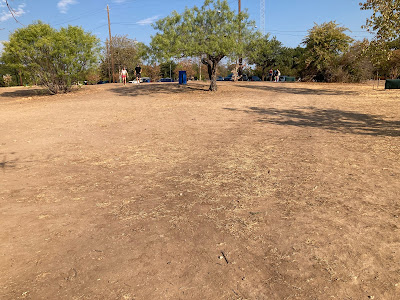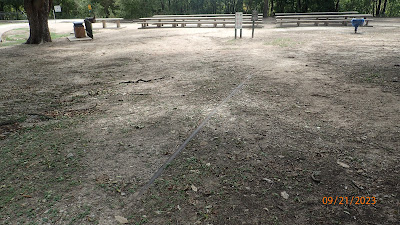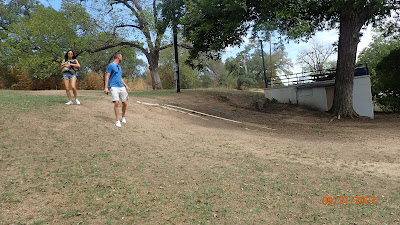The non-profit Austin Parks Foundation needs to tell the story that the City of Austin underfunds our park system. This concept is foundational for the non-profit in order to solicit donations from private donors.
In my opinion, the PARD/Planners of the shelved Zilker Park Vision Plan adopted the APF's mission as the PARD platform and agenda. No longer should PARD’s O&M and ecological remediations be funded sufficiently by the normal City budget process and periodic bond elections. For Zilker Park, PARD's new ZPVP was going to take care of that by recommending new management by a new non-profit, Zilker351. Or management by the existing non-profit, Austin Parks Foundation. Either would do.
I believe that the current leadership of PARD wishes to promote the narrative that the department is locked in a culture of “park poverty.”
Non-profits like the Austin Parks Foundation and Zilker351 will never be advocates for the people’s mission to have more natural parks:
Our Parks, Our Future, Community Engagement Themes
Ten themes emerged from the numerous community engagement events and
surveys completed as part of this planning process. Those themes along with the priority needs and citywide analysis form the basis of the system-wide recommendations to follow.Natural Experiences
People expressed a desire for parks that feel more natural.
This includes undeveloped, wild natural spaces; rustic finishes instead of paved areas, and more native plants.Unstructured Spaces
In general, people cared less about spaces for specific programming, opting for more multi-use spaces and preserving green, natural, and open spaces.
Green Infrastructure
There was an interest in proactively using green infrastructure in parks to build a more resilient city. This includes stormwater management, flood protection, heat island effect mitigation, drought tolerance, and native planting/habitat areas.
Rather than performing essential ecological restoration to protect the green of our parks, non-profits like projects where donor’s names can be put on the final product. See Waterloo Greenway as an example: https://waterloogreenway.org/wp-content/uploads/2021/08/Waterloo_Park_Map.pdf
I ask you to examine the Austin Parks Foundation website:
“Why give to APF?” at this link: https://austinparks.org/donate/
APF 1-2-3 reasons to donate | How PARD/Planners twisted those words in the ZPVP: |
"1. Austin is growing" | “Population growth” was the reason given by the PARD/Planners why the park should have a 5,000-seat amphitheater on the Great Lawn -- a geographic area that could easily have become a 50K-seat venue. This was decided without consulting the principle stakeholder: Zilker Theater Productions. And — the inevitable logistical element was added — a 1,000-car parking garage to serve the amphitheater. The next element: a landbridge to connect the garage/amphitheater. These concept/projects were unrelated to the peak-use and overcrowding problems that trouble Zilker Park. |
"2. Parks are underfunded" | "Parks are underfunded" was why the park should be under the management of the recently-formed Zilker351, a "non-profit" group with a professional parking garage architect on its board of directors. |
"3. Inequitable park access" | "Inequitable access" was the logic behind why Zilker Park should be become "accessible for everyone in Austin" with new parking garages -- as if Zilker Park, by definition, currently offers inequitable access. Many of us wondered: How could a parking garage make the park more equitable or accessible? We could never understand that equivalency. The PARD/Planners intentionally demoted the feedback of the nearby neighborhoods like Bouldin, West Austin and the ZNA. They strove to create an alternate reality: A false narrative that Zilker Park was in a war pitting one Austin neighborhood against another Austin neighborhood. They tried to divide us to win. PARD certainly knew — but didn’t want to tell the public — this simple truth: Zilker Park is overcrowded for about 54 days out of the year, and most visitors to the park on crowded summer days are TOURISTs. It was never about the “controlling influence” of rich vs. poor, or nearby vs. distant neighborhoods. Zilker Park simply becomes inaccessible on days when it is a tourist attraction for visitors to Austin from all over the world. |
Unresolved by the ZPVP: | The tension between conflicting goals remained unresolved in the ZPVP: To be welcoming to all and support:
|
Under PARD’s current operational narrative of “park poverty”, it has become difficult to determine if our city's parks are managed with an intent for care -- or -- with an intent to demonstrate damage in order to secure private donations and economic leases of parkland and facilities. The citizens of Austin desperately need a consciousness of abundance for our Parks Department.


























































